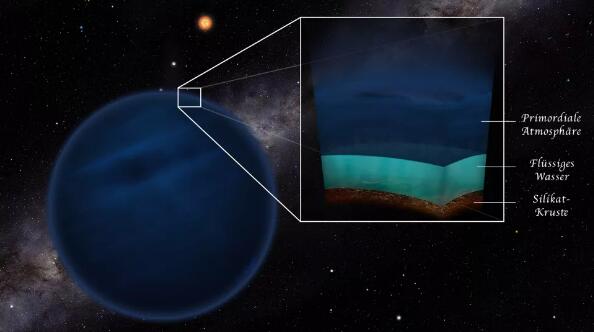On Earth, there is life virtually wherever there is water. As such, the search for extraterrestrial life has often focused on worlds whose surfaces are temperate enough to host liquid water, which astronomers dub as habitable. Aside from this prerequisite, scientists remain uncertain to what extent exoplanets have to resemble Earth in order to support life.
Previous work analyzing distant worlds suggests that most planetary systems may differ from ours. For example, super-Earths — rocky planets up to 10 times Earth’s mass — are absent in our solar system but very common elsewhere.
“The exoplanets we detect are so different from the planets in our solar system, and that is a good argument to keep thinking out-of-the-box when it comes to habitability,” study lead author Marit Mol Lous, an exoplanet researcher at the University of Zürich, told Space.com.
In the new study, researchers investigated how well super-Earths might support life. Until now, astronomers have only detected super-Earths that orbit near their stars, as those are the easiest to spot. However, prior computer models of planet formation have suggested that many super-Earths could orbit far away from their stars.
Super-Earths that are distant from their stars may retain the hydrogen and helium gas that made up most of their planetary systems in their youths. Together, hydrogen and helium make up 99.9% of the known normal matter in the universe; the heat from a star would evaporate these gases off any super-Earth near it, but super-Earths farther away from a star may keep this primordial atmosphere.
In the new study, researchers investigated whether a super-Earth enveloped in these gases might prove habitable. If the atmosphere of such a world is massive enough, its hydrogen can serve as a greenhouse gas, trapping heat from the star despite the planet’s distance, the scientists noted.
The scientists developed computer simulations of super-Earths between one and 10 times Earth’s mass with atmospheres rich in hydrogen and helium that orbited sun-like stars at distances of 1 to 100 astronomical units (AUs). (One AU is the average distance between Earth and the sun, which is about 93 million miles, or 150 million kilometers.)
The researchers found that super-Earths at distances greater than 2 AU could host temperate conditions and liquid water on their surfaces for up to somewhere between 5 billion and 8 billion years. Such findings suggest “we should also consider exotic habitats when we are investigating habitability on other planets,” Mol Lous said.
These kinds of super-Earths could prove habitable even if they go “rogue” — that is, wander through space not bound to a star. Recent work has suggested that free-roaming planets may be common. The new study found that many rogue super-Earths cloaked in hydrogen and helium are too hot shortly after their formation to host liquid water, but of these wandering planets, those more than five times Earth’s mass could eventually cool to host liquid water for more than 50 billion years if they have atmospheres about 10,000 times more massive than Earth’s.
However, don’t expect to be able to stroll on the surfaces of these planets. The atmospheres of these worlds need to be 100 to 1,000 times thicker than Earth’s, resulting in “roughly 100 or even 1,000 times the pressure at the surface of Earth,” Mol Lous said. “They are comparable to what we find at the depths of the ocean.”
In addition, the surfaces of these planets likely receive negligible sunlight, due to their distance from their stars. As such, any life that could evolve on such worlds might have to rely on sources of energy other than sunlight — for example, chemical reactions, the scientists noted.
“If life can arise on such a planet is indeed an important question to address, but difficult since we know so little about it,” Mol Lous said. “There are life-forms on Earth living under extreme conditions that might be in ways similar to the environments in the planets we investigated, so we don’t think it’s impossible. But again, many questions remain to be answered.”
The scientists detailed their findings online Monday (June 27) in the journal Nature Astronomy.
if you have a news tip, correction or comment, let us know




GIPHY App Key not set. Please check settings